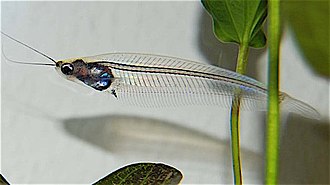Chordate





Chordates (Chordata) are a large and diverse phylum of animals that includes the vertebrates, along with several closely related invertebrates. Chordates are defined by having at some point in their life cycle a notochord, a dorsal nerve cord, pharyngeal slits, an endostyle, and a post-anal tail. These features may not all be present in the adult form, but they appear at some stage of development.
Characteristics[edit]
Chordates are distinguished by several key anatomical features:
- Notochord: A flexible, rod-shaped body found in the embryonic stage of all chordates and in the adult stage of some chordate groups. It provides skeletal support.
- Dorsal Nerve Cord: Unlike other animal phyla, chordates possess a nerve cord running along their back in a dorsal position. In many chordates, this develops into the spinal cord and brain.
- Pharyngeal Slits: Openings in the pharynx that may develop into gills in aquatic species or into other structures in terrestrial species.
- Endostyle: A glandular groove in the floor of the pharynx, which in higher chordates develops into the thyroid gland.
- Post-anal Tail: A tail extending beyond the anus, present during some stage of development, which is used for propulsion in aquatic species.
Classification[edit]
Chordates are divided into three subphyla:
- Urochordata (tunicates), which are mostly sessile marine animals.
- Cephalochordata (lancelets), small, fish-like marine animals.
- Vertebrata (vertebrates), which include fish, amphibians, reptiles, birds, and mammals.
Vertebrates[edit]
Vertebrates are the most well-known group of chordates, characterized by their vertebral column, or spine, which replaces the notochord during early development. This group encompasses a vast diversity of life forms, from the smallest fish to the largest mammals.
Evolution[edit]
The origin of chordates is a subject of ongoing research and debate. Fossil evidence suggests that chordates originated in the Cambrian period, over 500 million years ago. The earliest known chordate is believed to be Pikaia gracilens, a small, eel-like creature found in the Burgess Shale.
Habitat and Distribution[edit]
Chordates are found in a wide range of habitats across the globe, from deep ocean trenches to high mountain ranges. While the majority of chordates are vertebrates and thus animals that are more familiar to us, the invertebrate chordates play crucial roles in marine ecosystems.
Importance[edit]
Chordates include many species of significant ecological, economic, and medical importance. Fish serve as a vital source of food for billions of people, while mammals, including humans, have profound impacts on ecosystems worldwide. Research on chordate development and genetics provides valuable insights into human biology and disease.

Ad. Transform your life with W8MD's Budget GLP-1 injections from $75


W8MD offers a medical weight loss program to lose weight in Philadelphia. Our physician-supervised medical weight loss provides:
- Weight loss injections in NYC (generic and brand names):
- Zepbound / Mounjaro, Wegovy / Ozempic, Saxenda
- Most insurances accepted or discounted self-pay rates. We will obtain insurance prior authorizations if needed.
- Generic GLP1 weight loss injections from $75 for the starting dose.
- Also offer prescription weight loss medications including Phentermine, Qsymia, Diethylpropion, Contrave etc.
NYC weight loss doctor appointmentsNYC weight loss doctor appointments
Start your NYC weight loss journey today at our NYC medical weight loss and Philadelphia medical weight loss clinics.
- Call 718-946-5500 to lose weight in NYC or for medical weight loss in Philadelphia 215-676-2334.
- Tags:NYC medical weight loss, Philadelphia lose weight Zepbound NYC, Budget GLP1 weight loss injections, Wegovy Philadelphia, Wegovy NYC, Philadelphia medical weight loss, Brookly weight loss and Wegovy NYC
|
WikiMD's Wellness Encyclopedia |
| Let Food Be Thy Medicine Medicine Thy Food - Hippocrates |
Medical Disclaimer: WikiMD is not a substitute for professional medical advice. The information on WikiMD is provided as an information resource only, may be incorrect, outdated or misleading, and is not to be used or relied on for any diagnostic or treatment purposes. Please consult your health care provider before making any healthcare decisions or for guidance about a specific medical condition. WikiMD expressly disclaims responsibility, and shall have no liability, for any damages, loss, injury, or liability whatsoever suffered as a result of your reliance on the information contained in this site. By visiting this site you agree to the foregoing terms and conditions, which may from time to time be changed or supplemented by WikiMD. If you do not agree to the foregoing terms and conditions, you should not enter or use this site. See full disclaimer.
Credits:Most images are courtesy of Wikimedia commons, and templates, categories Wikipedia, licensed under CC BY SA or similar.
Translate this page: - East Asian
中文,
日本,
한국어,
South Asian
हिन्दी,
தமிழ்,
తెలుగు,
Urdu,
ಕನ್ನಡ,
Southeast Asian
Indonesian,
Vietnamese,
Thai,
မြန်မာဘာသာ,
বাংলা
European
español,
Deutsch,
français,
Greek,
português do Brasil,
polski,
română,
русский,
Nederlands,
norsk,
svenska,
suomi,
Italian
Middle Eastern & African
عربى,
Turkish,
Persian,
Hebrew,
Afrikaans,
isiZulu,
Kiswahili,
Other
Bulgarian,
Hungarian,
Czech,
Swedish,
മലയാളം,
मराठी,
ਪੰਜਾਬੀ,
ગુજરાતી,
Portuguese,
Ukrainian